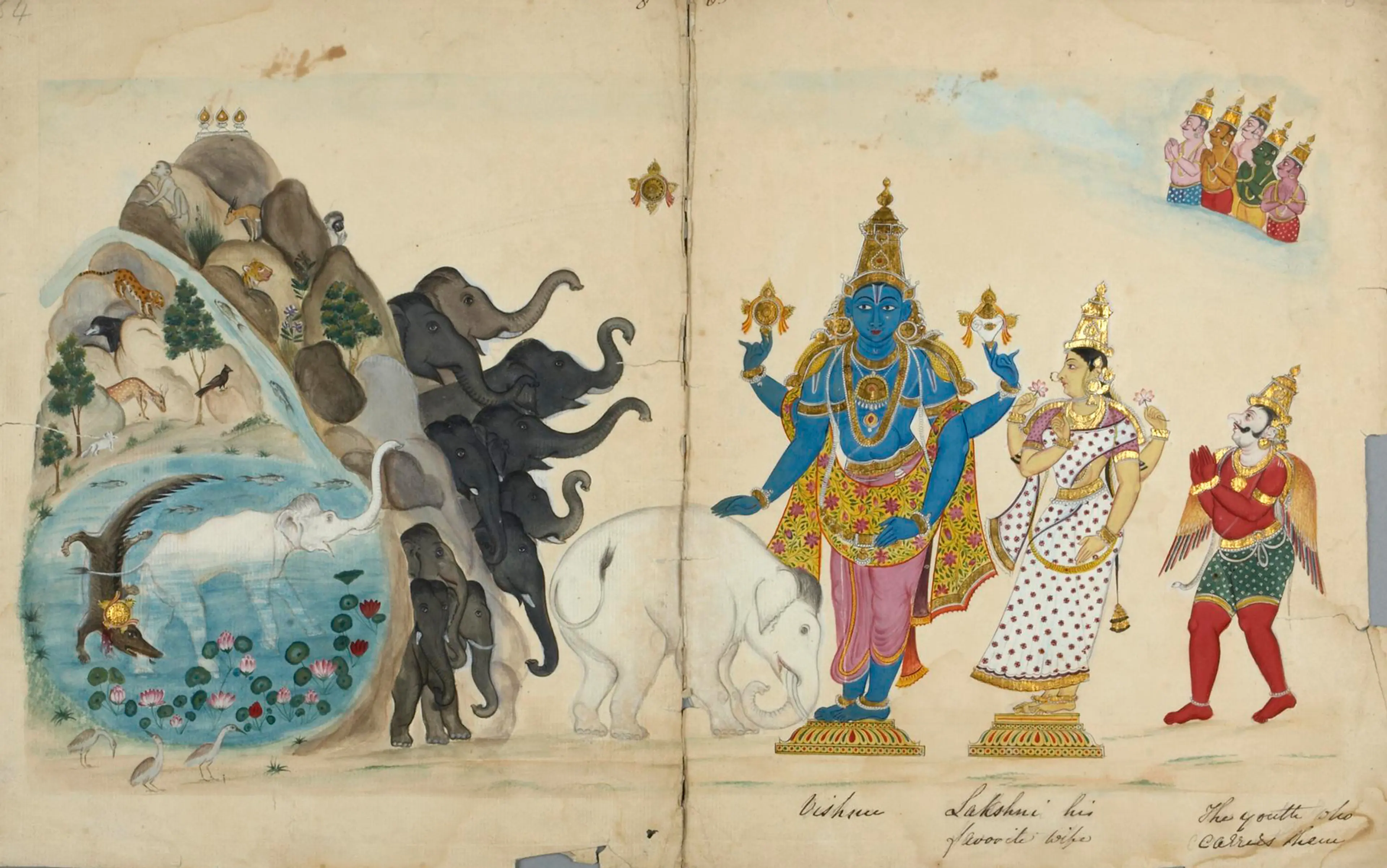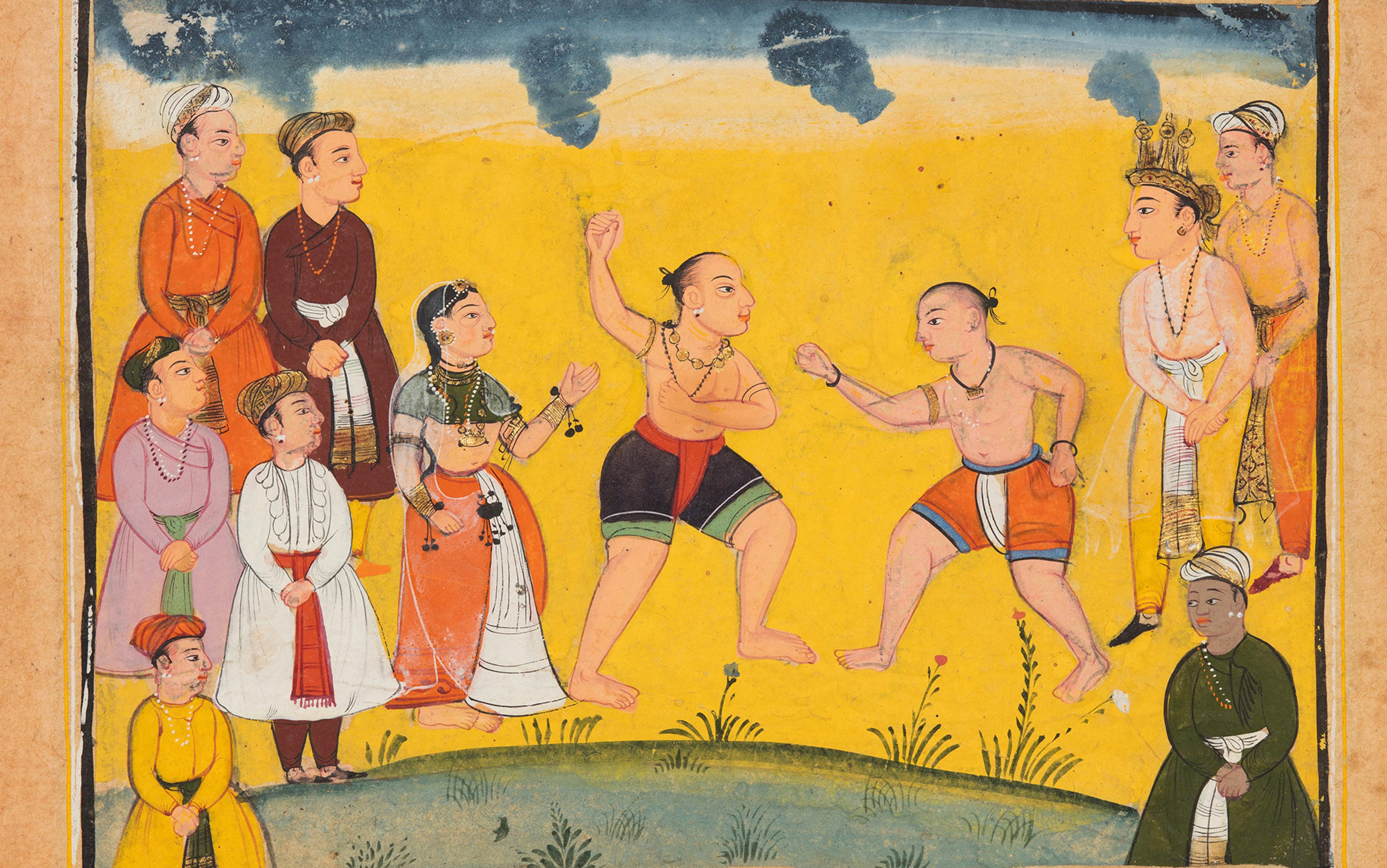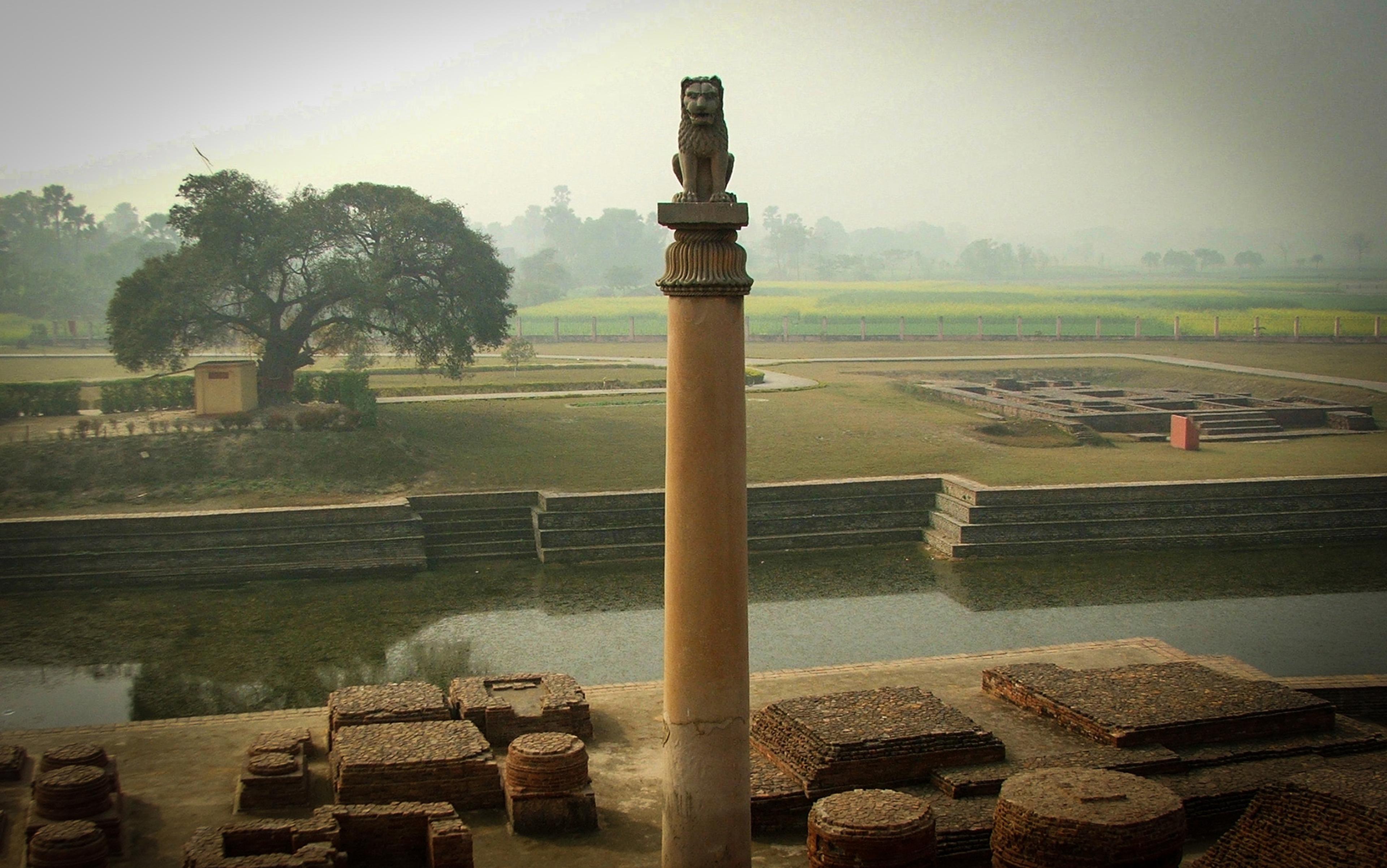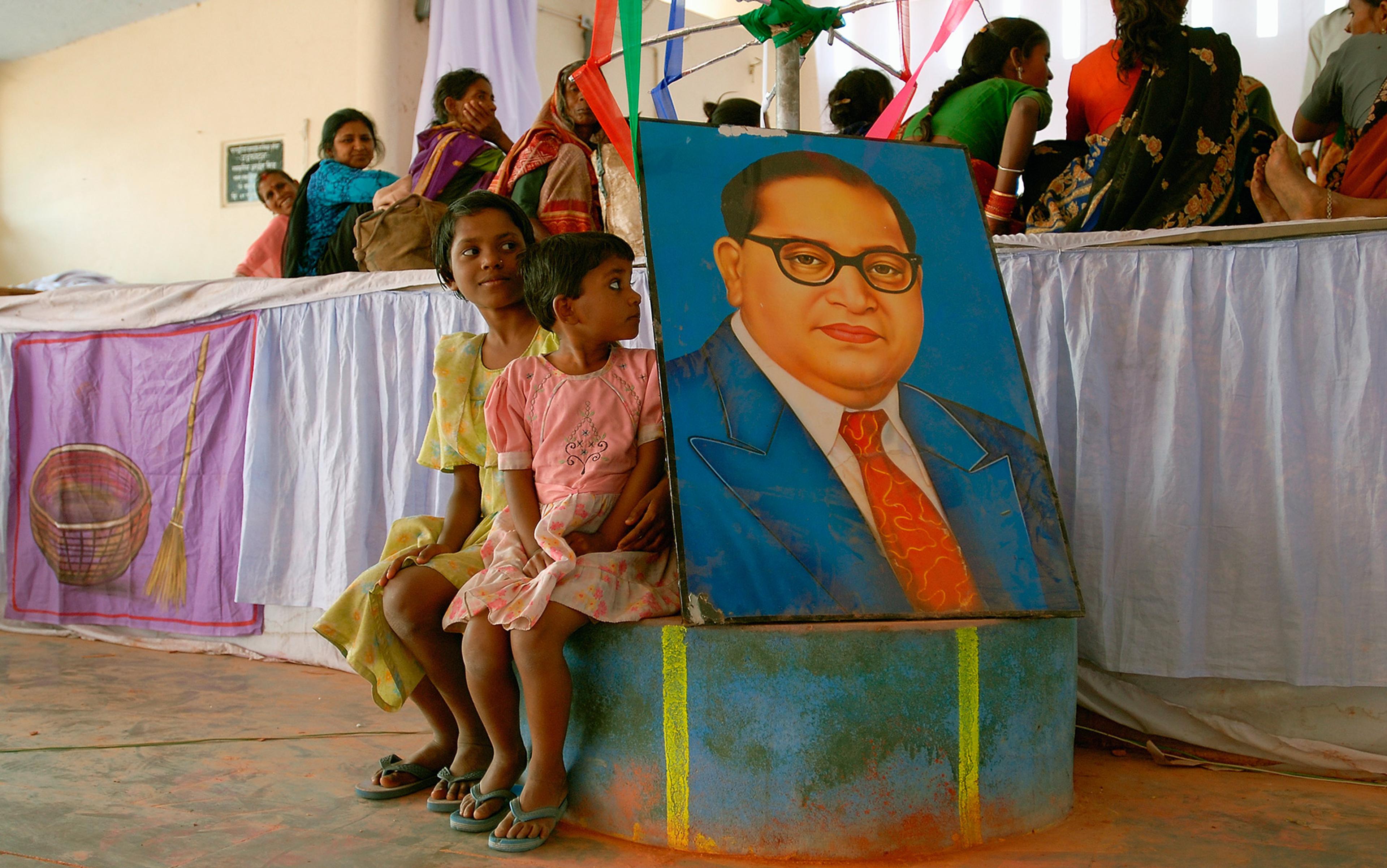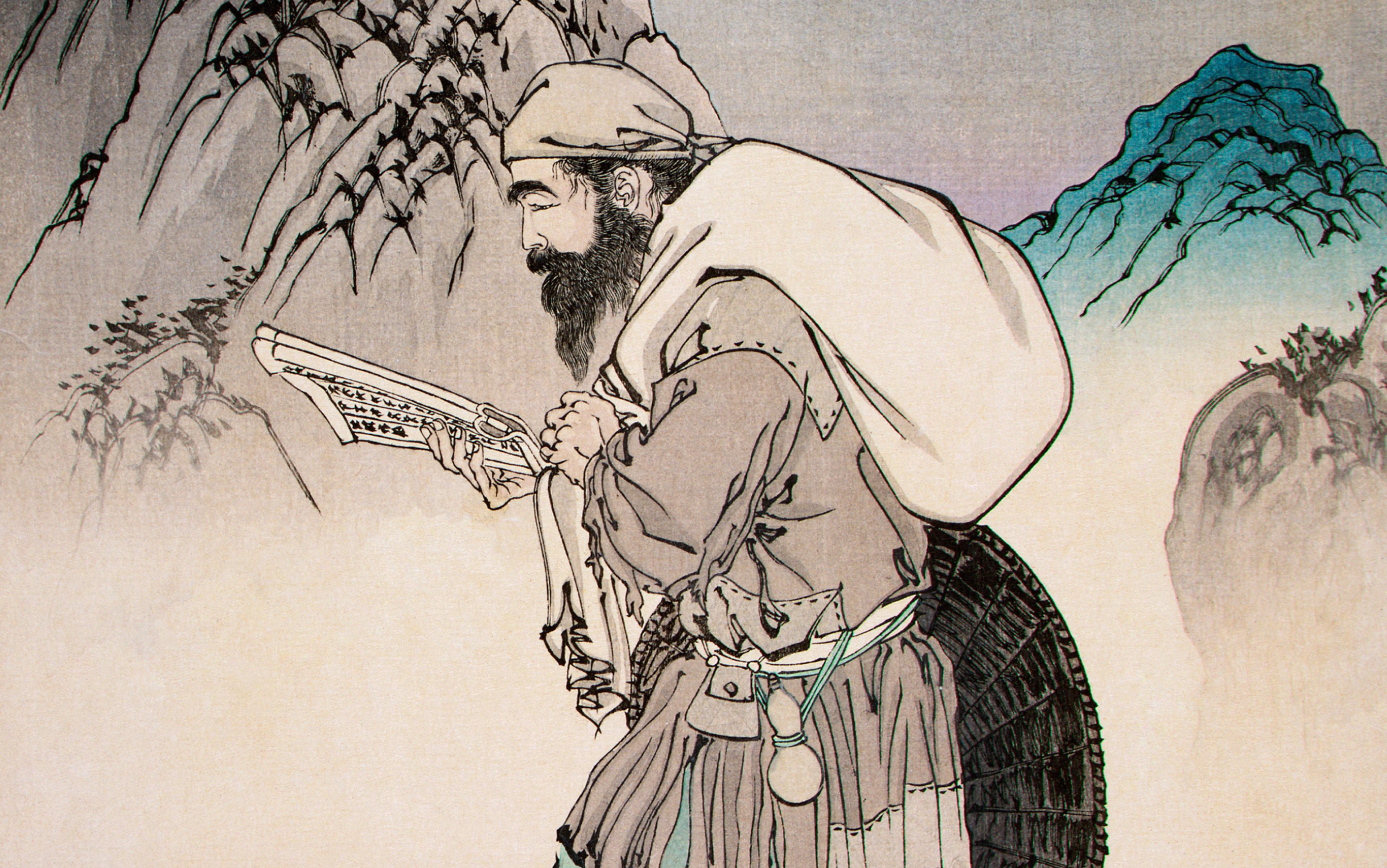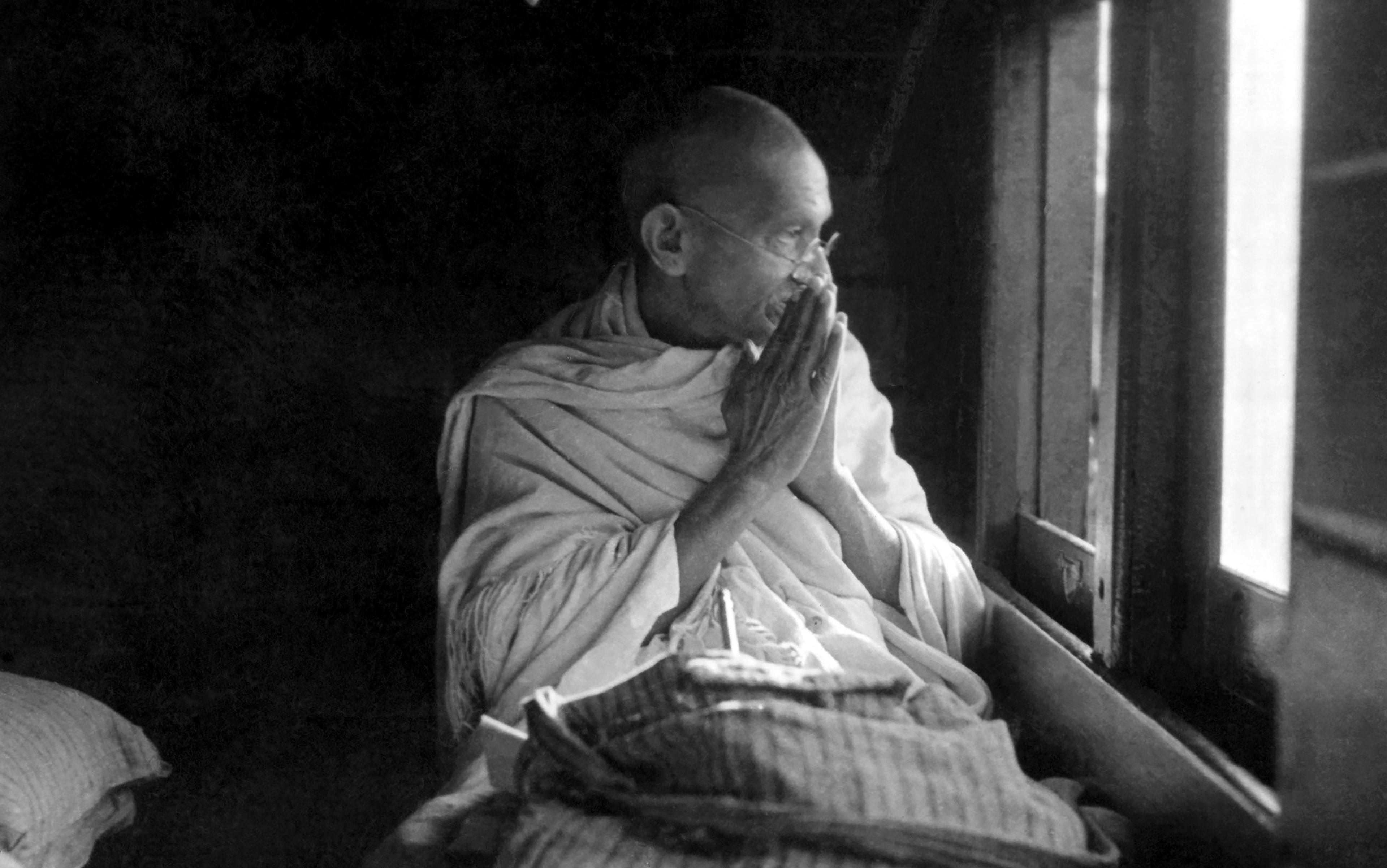As a child, for every summer vacation, my parents took me to Kerala in southern India to spend three months with my aunt in her large family-estate. It was an age before televisions were widely available and therefore at night-time she told us stories from the vast oeuvre of Indian mythologies called the ‘puranas’. These stories often involved a moral exemplar as a protagonist – a hero who embodied Immanuel Kant’s ‘categorical imperative’ – whose life’s arc exemplified devotion, truth, sacrifice, love and other ennobling ideas. The dramatic twists in these stories came from the gods and their caprice, which tested the commitments of righteous men and women in the face of opportunities to abandon their ideals and save themselves. They invariably never did, at great cost to themselves. My aunt referred to these men and women as ‘symbols of dharma’ (dharma prateekam), although she left that capacious word – dharma – unexplained. Thus, over the years, I learnt stories about Harishchandra the truthful king, Gajendra the worshipful elephant, and others – all of whom were, to my young mind, moral paragons.
For generations, these puranic stories have acted as templates for emulation – learning morality by mimesis – that aimed to break down the natural instincts of selfishness and self-preservation and, instead, rebuild a listener’s inner world in the service of dharma.
The locus of virtue in those stories lay not in ritual or rank but in sustaining commitment to an ideal that demanded some form of sacrifice. When faced with morally complex situations in their own lives – be they a child listening to his aunt, or an audience hearing them from a religious teacher – the listeners could theoretically ask themselves: ‘What would Shravana the filial son do?’ Or: ‘What would Savitri the faithful wife do?’
As a young boy, Mahatma Gandhi had seen a play about the legendary truthful king Harishchandra – a man who sacrifices everything, including his child and wife for the sake of truth-telling. He later wrote about the impact of that story in his life: ‘It haunted me and I must have acted Harishchandra to myself times without number … The thought of it all often made me weep.’
But beyond such instances of moral emulation, at the heart of this pedagogic agenda was also a model of how humans are born: they emerge in a new womb carrying along with them all the deeds and knowledge from their previous lives (the Katha Upanishad from 700-500 BCE summarises this principle as: yatha karma yatha shrutam). The role of these stories is therefore more than just simple moralising: by emulating the actions they prescribe, the stories help cleanse the mind, like a previously used but unwashed utensil, and help improve our abilities to choose better in life. However, nothing is preordained in this pedagogic nudge. Implicit in this model of human birth, or more accurately the emergence of sentient beings, are two outcomes: one can very well ignore these stories and ideals of self-improvement and go on to accumulate more ‘karmic’ muck, or one can live as per these stories and steadily avoid ‘karmic’ burdens. The freedom to choose is yours. Amid all this, there remains a supervening question often left unanswered: what is this dharma that these stories speak of and point towards?
The answer is not easy to arrive at. Even the Mahabharata, that ocean-sized epic tale, reminds us that ‘the essence of dharma is hidden in a cave!’ Vishnu Sukhtankar, the first editor of The Critical Edition of The Mahabharata (1944), writes: ‘I am not going to make the attempt to give you another perfect definition of Dharma, a task which … has taxed better brains than mine.’ But this kind of self-aware humility has not prevented scholars or lay people from forming opinions. A traditional answer has been to look for the etymological origins of ‘dharma’. The root in the Sanskrit language is dhr-, meaning ‘to hold’ or ‘to support’ or ‘to maintain’, and which appears for the first time in the Rigveda – a vast corpus of religious poetry that was arranged in its hymnal form some time during 1400 BCE to 1000 BCE. In Book 8, we find one of its earliest meanings:
Him [the God Indra], the double lofty, whose lofty power holds fast the two world-halves,
the mountains and plains, the waters and sun, through his bullishness.
Here, ‘dharma’ refers to the act of preventing the world from falling into chaos. Before the gods performed this act, all was chaos, the world was an unrecognisable inchoateness.
But the word ‘dharma’, and the derived cognates, is a shapeshifter over time, and occasionally even within one text alone. Stephanie Jamison, the co-translator of the monumental Oxford University Press Rigveda (2014), memorably writes elsewhere that, while the word ‘porridge’ has a specific association to Goldilocks in most of our minds, the word ‘oatmeal’ doesn’t carry that same cultural reference. Thus, while a form like dhárman appears ‘63 times’ in the Rigveda and is relatively staid at that stage in the term’s reception history (‘far more “oatmeal” than “porridge”’, as Joel Brereton put it in 2004), this hasn’t helped modern translators, thanks to at least three millennia of meanings that have smuggled into the term since those verses were first composed.
‘Dharma’ was the froth born from performing ritual
This efflorescence of meanings was vividly visible when the German linguist Karl Friedrich Geldner translated the Rigveda in 1928 and used ‘no fewer than 20 renderings’ – from ‘law’, ‘order’, ‘duty’ ‘custom’, ‘quality’ and so on – to describe dharma in various contexts.
In a recent conversation with Bibek Debroy, translator of the epic 10-volume Penguin edition of the Mahabharata (2015), he told me that: ‘The basis of Sanskrit is the verbal root, the dhatu … Looking at it from the point of view of the root, the verbal root – actually [‘dharma’] is very, very precise.’
In this seemingly simple remark, however, lie the seeds of two distinct types of Indian thought, which began from the Rigveda and evolved over time: a ‘verb-centric’ understanding and a ‘noun-centric’ interpretation. As Daya Krishna put it in 1997, the verb-centric view spawned the long-lived Mimamsaka (hermeneutic) traditions that lay a premium on verbal declarations, injunctions, the ritual sacrifice, and ultimately a theology of action (karma) – for which ‘dharma’ was the froth born from performing ritual. In contrast, a noun-centric view grew into the Upanishadic tradition that understood reality as being described by ‘being’ rather than by ‘becoming’. This view elevated non-ritualistic speculations and methods of debate and, importantly, drew a link between reality and knowledge (jnaana). Thus, whereas for the Mimamsaka traditions, ‘dharma’ is tied to instruction and performance of action – as we see in the Mimamsa Sutras of Jaimini, where he instructs: codanaalakshnaartho dharmah (‘Dharma is that referent distinguished by “injunctive verbal force”’) – for the Upanishadic worldview, dharma in its essence is born out of a transcendent ideal: truth (yo vai sa dharmah satyam vai tat; ‘Now, dharma is nothing but the truth’).
By the 4th century BCE, when early Buddhism grew into a movement, it began to contest and reject the primacy of the Vedas. To do so however, it borrowed ideas and images, including that of ‘dharma’, from the Vedic world from which it had emerged. But, unlike the Vedic worldview in which dharma is first seen as the order-making mechanism and then, over time, acquires its ritualistic flavour, in the Buddha’s discourse, it acquires a different and more radical meaning.
In the Vedic world, despite its luminously sceptical passages – such as in the Nasadiya Sukta (the Hymn of Creation), in which the poets question the existence of the gods themselves – the poetic utterances are seen as a revelation, a transcendent reality witnessed by the seers (‘drashta’). The result was a verbal universe in which words and the world were marked by ‘substantiality’. They contained real stuff – whatever that may be – and were held together by foundations.
In contrast, in the Buddha’s discourses, words and concepts were presented as fluid potentialities. In Pali, the language of the early Buddhist works, our reality is born from an intricate play of sounds and symbols that rise and fall. As David Kalupahana writes, this was a world where ‘a word occurs’ (akkharam anupatati) or ‘a conception takes place’ (sankham gacchati). In the Buddha’s world, while the Pali word dhamma (which is dharma in Sanskrit) is often translated as ‘statements of doctrine’, the dhamma emerges as a set of instructions to annotate a model of reality that is understood to be an assemblage of phenomena that arises and dissipates.
Krishna is an embodiment of an ancient idea of dharma that is of this world and beyond it
Over the next two millennia, various schools of Hindus and Buddhists sought to establish the grounds – metaphysical, linguistic, epistemological and ontological – out of which their respective understandings of dharmas or dhammas arose. That didn’t preclude dharma from becoming an ideological complex of norms, rules and rituals that binds society together. This transformation came, despite the Buddha, who loved using similes, saying that the dhamma was merely a ‘raft’ that helped us cross from this side of the river of life to the other. Inbuilt in his description was a pragmatic instinct teaching us that, on occasion, we would have to forsake what is considered the ‘good’ in order to discover a more moral order.
If there is a figure in Indian thought who embodies this pragmatic spirit, it is the god Krishna who, as Jonardon Ganeri writes in 2007, often plays the role of a ‘moral expert’, one who parses between choices that present themselves as duties with opposing outcomes and offers a solution that doesn’t explicitly change tradition, but at the same time refuses to reduce the truth of a situation into a banal either-or. Krishna’s understanding of dharma allows him to happily abandon some commitments to transcendent ideals in order to facilitate the wider goal of human flourishing and social stability. In this, Krishna is the opposite of the puranic heroes my aunt was telling me about.
Dharma, Krishna suggests, is not a programme to achieve moral perfection but rather a practice to live better with each passing day, contingent on where we find ourselves in history and society. His is a form of radical conservatism – conservative because he values the preservation of a traditional social order, and yet radical because he enjoins the individual to see beyond the world and its accompanying despair, and sublimate one’s ego unto a theophanic vision of god. And, amid these socioreligious valences, Krishna is also an embodiment of an ancient idea of dharma that is of this world and beyond it, a way of being in which, as Arindam Chakrabarti put it in 2020: ‘one lives, with a wonderful lightness, without any interest in world-affirmation or world-denial’.
By 200 BCE, the proliferation of urban settlements, the rise of non-Vedic religions such as Buddhism and Jainism, and the new Indo-Hellenic cultural discourse following Alexander’s invasion in 327 BCE gave rise to a great tradition of textual codification and exegesis on ‘dharma’ as a lived practice. This enterprise would go on until the 18th century and birth a vast collection of works called Dharmashastras and Dharmasutras – the treatises and formulae to instantiate dharma and verify the fidelity to its practice. Thus arose a vast set of conventions and rules on how to live, how to organise society, whom to marry, what to eat, and more – all of which were formulations on social hierarchies and establishment of order. The overwhelming set of duties imposed in these texts is on the householder. These duties emphasise moderation, and a heightened and explicit concern for one’s spouse, child, the priests, the animals, one’s own labours, one’s own community, and the gods. There is no ambition to evangelise another into one’s own way of life – in fact, illicit relationships are a perpetual horror in these texts.
What animates these elaborate sets of injunctions and prohibitions is the recognition that humans are alive but for the briefest of moments – ‘Time cooks all beings, inside its own self,’ says the aged warrior Bhishma to his great-nephew Yudhishtira. In the worldview of many of these Dharmashastras, the great enemy comes in three forms: chaos – which includes upheaval of political order (‘Of all the dharmas, the King’s dharma is the most important and it protects all the other dharmas’); marrying someone who violates your commitment to rituals and duties; and, ultimately, the abandonment of the gods themselves.
The most famous of these legalistic dharma works (by the early colonial period in 18th century) was the Manu-smriti, or Manava-dharma-shastra – attributed to the sage Manu, who devised an archipelago of norms and customs that has lasted, in varying forms, for nearly 2,000 years. Dharma, in the Manu-smriti, is both a verb – the performance of duties – and a noun – a religious life within an action and penance system (dharmavidhi and prayschittavidhi). Much of Manu’s work is dedicated to affixing the lives and routines of the ritualists (the brahmana) and the warlords (the kshatriya), while the merchants (vaishya) and the artisans (shudra) are barely discussed. For Manu, women threatened to unravel his carefully architected social system of restraints and duties. To his view, they inspired moral delinquency and, inevitably, a drift from one’s commitments – and yet he also insists that women were to be seen as sources of blessings, and warns men against abusing women.
Contradictions of this sort are rife in Manu’s text. Inevitably, the social norms derived from Manu’s words have sought to sustain a heterogenous society through carefully calibrated hierarchies – and in turn allowed for supremacist and chauvinistic furies to inflict a great amount of human suffering and indignities on the rest. And yet, the sociological mystery is that Manu’s dictums survived, flourished, and were innovated upon for millennia – which indicates that the story of a hierarchical and heterogenous society is more complex than a simple tale of oppression and cruelty.
‘Dharma’ became a site for critical reflection and social actions in the age of colonialism
Manu’s worldview operationalises ‘dharma’ by devising a social order that adheres closely to what is called the varnaashrama ideology – a neologism comprised of two capacious words: varna and ashrama. Here, ashrama is understood to refer to the four stages along a life’s path: brahmacharya – the celibate student; grihastha – the householder; vanaprastha – the forest dweller; and sanyasa – the renunciate. The other component of the varnaashrama ideology is the more fraught term of varna, which was often used to describe a community of fellow spiritual aspirants whose livelihoods were marked by a similar material basis. Thus, we often find mention of four varnas – priests, warlords, merchants, labourers – which has, over the centuries, been conflated with jaati, an occupational cluster that, in turn, was translated and traduced into an assorted repertoire of lived realities and symbolisms that we ascribe to ‘caste’ today.
While for many over the centuries dharma has been tantamount to a defence of the caste system, the opposite has often been true as well: dharma as an ideal of flourishing that transcends caste. The Mahabharata is explicit that there are often occasions when demands on individual conduct supersede all else. The primordial man, Swayambhu Manu, advises: ‘One must also entirely ignore dharma that concerns jati, shreni, adhivasa, and family. These are not dharma, because there is no real dharma in them.’ But elsewhere, Bhishma who views the world from the perspective of governance and order cautions that the god Vishnu is ‘not affectionate towards those who do not follow the dharma of their jati and varna’. The Mahabharata’s attitude is one of a begrudging pragmatism. It seems to say that human societies will inevitably cleave into groups and clusters, often on the basis of economic arrangements, and form rules unto themselves. These cleavages, the Mahabharata suggests, will happen despite knowing very well that such boundaries are man-made and that the truly enlightened one sees no divisions. It begrudgingly accepts that both truths – the truth of groups, and the truth of the individual insight – will inevitably thrive and contest for primacy.
When the British actively began to study India – scholasticism financed by organised loot – it had an unexpected impact. A new class of Indians who were slowly coming to terms with the surrounding oppressive air of colonialism – and yet felt seduced by the new intellectual spaces opened up by access to European knowledge – began to think anew about dharma. They had their feet in both worlds – the world of European academia and the world of traditional Hinduism, often called ‘Sanaatana dharma’, the eternal dharma. From the radical poet Bankim Chandra Chatterjee to the reforming politician Mahatma Gandhi, ‘dharma’ became a site for critical reflection and social actions in the age of colonialism.
At the same time, the social stratification that had been preserved in the name of dharma, and had survived centuries, had begun to fall apart. The ‘untouchables’ – now called Dalits, the group that had suffered the most in this extraordinarily cruel arrangement of social stigma, punishments and taboo – organised in 1935 under the guidance of the constitutional scholar B R Ambedkar and passed a resolution with the title ‘To the Untouchable Community: A New Message of a New Manu’. Their willingness to co-opt the persona of Manu in order to announce their manifesto of social independence speaks to the extraordinary influence of his social order. In the early 1950s, Ambedkar and many of his followers converted to Buddhism, an act of self-redescription that revealed the importance of ‘dhamma’ as a word containing other readings filled with emancipatory promise. Ambedkar’s move was an active effort to separate, through a study of dharma, the ideal of flourishing from the orthodox social arrangements that had encrusted around it.
This brief social history has left little space to ask why dharma as a philosophical construct acquired such pre-eminence over time. To attempt to answer this, especially from our modern perspective, we must return to the singular and schismatic presence of the philosopher-saint Adi Shankara (8th century CE) with whom, as the contemporary scholar Pratap Bhanu Mehta describes, every person who thinks about Indian intellectual history – from the Marxist D D Kosambi and the anticolonialist Gandhi to the mystic-poet Aurobindo and the contemporary politician Narendra Modi – is forced to wrestle. It is from the rejections, reactions and reconciliations to the ontological framework that Shankara laid out, and the acts of textual privileging he performed, that emerge the main strands and their contestations that make up modern-day Hinduism. In his commentary on the Bhagavad Gita – the philosophical poem that appears in the epic Mahabharata – Shankara offered the ‘definition’ ‘praaninaam saakshaad abhyudaya nihshsreyasa hetu ya sa dharma’, or ‘Dharma is that which occasions (material) wellbeing and (spiritual) liberation of all sentient beings.’
Here, dharma is defined indirectly, by which I mean dharma is the ‘A’ that allows for ‘B’ to occur. As is often the case with descriptors and knowledge structures from the ancient world, this description is analogical in nature and opens itself up to more questions. Shankara’s definition opens up two possible avenues to explore further. One, ‘dharma’ appears as a capacious word in whose name dogmatism, radicalism, iconoclasm, conservatism and humanism can be advocated as long as the speakers of those words purport to speak of human welfare. This poses the natural, and seemingly intractable, question of how are we to recognise whether an action comports with dharma?
A traditional answer to this question is to try to stick to the rituals and the ways of one’s ancestors. This way of facilitating dharma relies on the reproducibility of virtue through repetition of action across generations. It relies on a largely self-sufficient social and endogamous marital arrangement – both of which the caste system ensured. But the world intrudes in ways we can’t force. Even Shankara – the fountainhead of modern Hinduism – was deemed in violation of rituals at specific junctures in his life. In essence, if we assess our fidelity to dharma by solely inspecting our commitment to ritual, we may preserve a way of living but inevitably run the risk of engaging in sterile debates that have little to do with the challenges of a fast-changing world.
Dharma insists that the virtues of the child burnish the life of an imperfect parent
The other approach to the question of how to discern dharma in an age when everything is in a flux is to rely on a heuristic by which Aristotle evaluated whether a person was a eudaemon, or one who flourished by living ‘an active life of reason and virtue’. Aristotle asked us to evaluate a life by awaiting to see ‘how the grandchildren turn out, as it were,’ as Owen Flanagan wrote in 2011. In this sense, whether the aunt who told me those puranic stories about dharma exemplars herself lived a life of dharma can be known only by seeing the conduct and virtue of my grandchildren. This approach runs in the face of our modern, progressive views, whereby the individual and her actions are the sole locus of our investigation seeking to evaluate her life.
This way of thinking about dharma makes explicit the assumption that the life of a human can’t be evaluated on its own terms. It sees a human being as striving to disentangle a net of correlated commitments – to one’s self and to other sentient beings. Thus, while karma may very well operate by means wherein the sins of the parent are visited upon the child, this view of dharma insists that the virtues of the child burnish the life of an imperfect parent. This dharma-centric view remains avowedly of this world, one in which the ends are an intergenerational commitment that recognises our historically and socially contingent selves, to the flourishing of an ever-expanding locus of affiliations.
The other consequence of Shankara’s definition imposes upon each historical age the burden to critically rediscover what constitutes ‘wellbeing’ and ‘liberation’. This poses the obvious problem of who is to be included in our circle of concern? Who is entitled to ‘wellbeing’ and ‘liberation’? Who gets to decide that? As our concern for fellow beings grows larger in a democratic age, in due course, there will inevitably arise questions on what constitutes dharma when we begin to include all organic life and even artificial general intelligence in our ever-expanding taxonomy of sentience.
A more immediate and vexing question is how to understand dharma when opposing but equal truths force us into an ethical cul-de-sac. If economic growth results in poverty reduction but also in environmental degradation, whose dharma must one privilege? The result is that, when we begin to think about ‘dharma’ as a form of rule-dependent flourishing, we come face to face with a heterodoxy of dharmas – such as swa-dharma: the dharma of the individual; yuga-dharma: the dharma of the zeitgeist; and so on. One consequence of this approach to understanding dharma as the series of contesting ethical frameworks is that it forces us to live in the present rather in some reactionary idyll of the past or in the revolutionary utopias of the future. This makes us ask questions of composition (how do we put together different viewpoints?), of social choice (how should we determine which viewpoint matters more?), and about the relationship between dharma and the manifoldness of reality. If we take Shankara’s definition seriously, by virtue of the questions it forces us to face up to, we are made to acknowledge the non-onesidedness of reality – we are nudged into non-radicalism.
A few years ago, before my aunt passed away, I visited her and, out of nostalgia, asked her to tell me another of her stories from the puranas. She demurred and laughed, and then said: ‘Those are stories for children.’ A moment later, with a hint of her old steely self, she added: ‘Are you still a child?’ I wasn’t sure what the appropriate answer was. Maybe I had grown past those stories of talking elephants and singing birds who sacrifice themselves for some transcendent ideal. Or perhaps she was nudging me to recognise that one can never outgrow those stories, for to do so would be to outgrow the seeds of dharma contained within them: truth (satya), nonviolence (ahimsa) and compassion (anrishamsya). Seeds that she, and generations of storytellers before her, hoped would one day grow into a tree of dharma.
Links & books
Given the vast expanse of time through which ‘dharma’ has travelled as a concept and social phenomenon, this list of books is but a subset of the works that engage with it directly or otherwise; they are largely accessible as well.
Jonardon Ganeri’s The Concealed Art of the Soul (2007) offers an exciting glimpse into the history of Indian thinking on ethics and epistemology. While Jitendra Nath Mohanty’s Reason and Tradition in Indian Thought (1992) is a distillation that rewards with each reading, Daya Krishna’s Indian Philosophy: A Counter Perspective (1991) is provocative and takes an axe to many lazy formulations passed off as intellectual history. Natalia Isayeva’s Shankara and Indian Philosophy (1991) is a heroic effort to chronicle the ideas of its subject. Aurobindo’s Essays on the Gita (1922) and Christopher Framarin’s Desire and Motivation in Indian Philosophy (2009) are opposite in tenor but animating both investigations is the idea of ‘desireless action’.
The historical experience of women is understudied, barring for a few stellar exceptions, such as Mandakranta Bose’s Women in the Hindu Tradition (2010) and Kathryn Blackstone’s Women in the Footsteps of the Buddha (1998). Hajime Nakamura’s Gotama Buddha (1977) has nudged me into many happy exploratory digressions. Mark Siderits’s Buddhism as Philosophy (2nd ed, 2021) is a marvel of lucidity and exposition. Donald R Davis, Jr’s The Spirit of Hindu Law (2010) and Patrick Olivelle’s A Dharma Reader (2016) open our eyes to many forgotten interpretations of dharma. Bimal Krishna Matilal’s Ethics and Epics (2002) and David Kalupahana’s Causality (1975) are examples of how to think widely while living inside a tradition.
